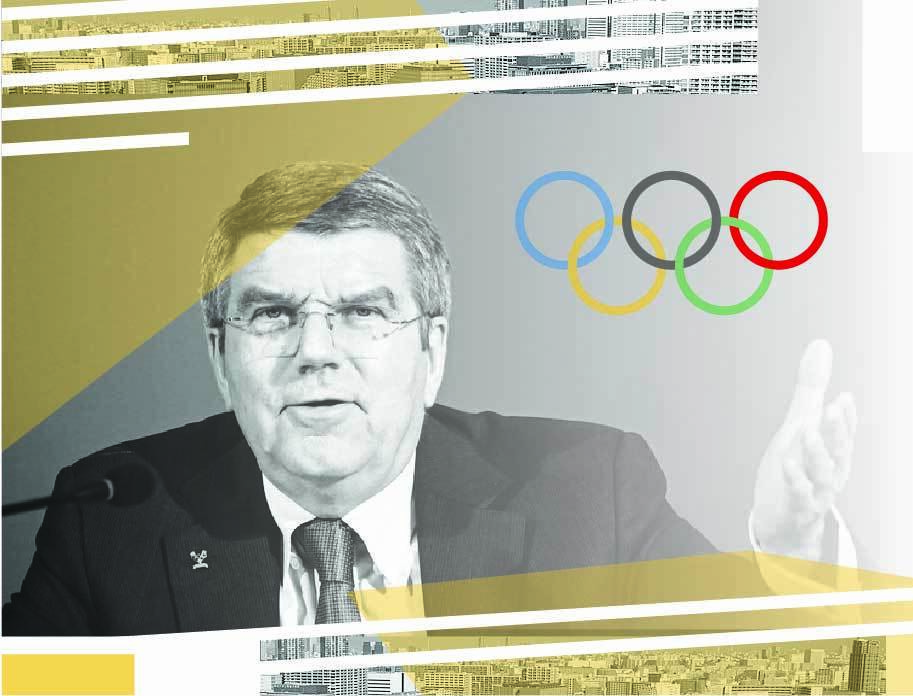
Dr Riikka Turtiainen
Senior Lecturer in Digital Culture at the University of Turku, Finland. Her research interests focus on sports and (social) media, particularly representations of female athletes. She has also studied digital embodiment and new aspects of exercise cultures.

Section 2: Media Coverage & Representation
- Twitter conversations on Indian female athletes in Tokyo
- The Olympic Channel: insights on its distinctive role in Tokyo 2020
- How do we truly interpret the Tokyo Olympic ratings?
- Between sexualization and de-sexualization: the representation of female athletes in Tokyo 2020
- Reshaping the Olympics media coverage through innovation
- An Olympic utopia: separating politics and sport. Primary notes after analyzing the opening ceremony media coverage of mainstream Spanish sport newspapers
- What place is this? Tokyo’s made-for-television Olympics
- The paradox of the parade of nations: A South Korean network’s coverage of the opening ceremony at the 2020 Tokyo Olympics
- Tokyo 2021: the TV Olympics
- Why we need to see the “ugly” in women’s sports
- “The gender-equal games” vs “The IOC is failing black women”: narratives of progress and failure of the 2020 Tokyo Olympics
- Ghana: Poor local organizing, and absence of football team dampens interest
- Megan Rapinoe: The scary Bear for many Americans?
- ‘A Games like no other’: The demise of FTA live Olympic sport?
- Temporality of emotionalizing athletes
- Fandom and digital media during the Tokyo 2020 Olympic Games: A Brazilian perspective using @TimeBrasil Twitter data
- Media wins medal for coverage of athletes as people, instead of entertainers
- Media frames and the ‘humanity’ of athletes
- Reporting at a distance. Stricter working conditions and demands on sports journalists during the Olympics
- New Olympic sports: the mediatization of action sports through the Olympic Games 2020 Tokyo
- Simone Biles, journalistic authority, and the ideology of sports news
- Representations of gender in the live broadcast of the Tokyo Olympics
- Americans on ideological left more engaged in Summer Olympics
- Nigeria: Olympic Games a mystery for rural dwellers in Lagos
- National hierarchy in Israeli Olympic discourses
- Equestrian sports in media through hundred Olympic years. A roundtrip from focus to shade and back again?
- Reshaping the superhuman to the super ordinary: The Tokyo Paralympics in Australian broadcasting media
- Is the Paralympic Games a second-class event?
- The fleeting nature of an Olympic meme: Virality and IOC TV rights
- Tokyo 2020: A look through the screen of Brazilian television
- Is the Paralympic Games a second-class event?
- How digital content creators are shaping meanings about world class para-athletes
- How digital content creators are shaping meanings about world class para-athletes
- The male and female sports journalists divide on the Twittersphere during Tokyo 2020
- Super heroes among us: A brief discussion of using the superhero genre to promote Paralympic Games and athletes
- “Everything seemed very complicated”: Journalist experiences of covering the Tokyo 2020 Paralympic Games
- Representing high performance: Brazilian sports journalists and mass communication professionals discuss their philosophies on producing progressive Paralympic coverage
- Representations of gender in media coverage of the Tokyo 2020 Paralympic Games
The Tokyo Olympics can be seen as the the first gender equal Games in history when 49 per cent of the participated athletes were women. Before the Games the Tokyo 2020 Organising Committee founded the Gender Equality Promotion Team and the International Olympic Committee assured that the visibility between women’s and men’s events would be equal. But how is the Tokyo 2020 official concept ‘Unity in Diversity’ eventually actualized if we consider the media representations of the female athletes during the Games?
Women’s sport has suffered from the lack of media coverage for decades with repetitive explanations for marginalization. However, during the big sporting events such as the Olympics female athletes have traditionally suited for the roles of national heroes similarly with men. In the context of Tokyo Olympics some national media broadcasters still followed the outdated policy by objectifying the bodies of female athletes. The Dutch analyst Johan Derksen commented in the sports show De Oranjezomer that Brazilian soccer goalkeeper Barbara was overweight. According to Derksen she couldn’t catch any balls and was like “a pig with a sweater”. Likewise, when a reporter of the China Central Television interviewed the shot put gold medalist Gong Lijiao after the competition she called her “manly girl” and asked Gong about her potential boyfriend and if she is now going to “return to being a woman”. These trivialized representations received attention in mainstream media internationally and in both cases reactions in social media – notably in Chinese Weibo and Instagram – were overwhelming.
One familiar way of female athletes’ trivialization is glorification of their masculine background teams: co-athlete partners, famous fathers, or striking coaches. Even though the Australian male swim coach gained more media attention with his wild winning celebration than the gold medalist Ariarne Titmus herself, the Tokyo Olympics were also stage for more diverse gender representations. Female athletes themselves took the stand for equality on several occasions. Female soccer players were taking a knee before their matches in a gesture to end racism. The new Olympic regulations allowed this expression and at last the IOC cancelled also the prohibition to share photos of athletes taking the knee. Political demonstrations were still banned on the medal stand in Tokyo, but the IOC suspended its investigation into shot putter silver medalist Raven Saunders’ (US) podium demonstration after the sudden death of her mother. Black, gay athlete – who attracted attention for her purple and green dyed hair and superhero face masks – crossed her raised arms to form an X when she was on a podium after winning the silver medal to represent “the intersection of where all people who are oppressed meet”. The German gymnastics team took over control of their own clothing and challenged the traditional boundaries as well when they competed wearing full-body unitards instead of revealing leotards. This can be interpreted as a statement against the long-lasting objectification and sexualization of women’s sport.
Along with the struggles of the most successful gymnast Simone Biles (US) the mental health issues came to the fore in Tokyo. Biles got huge support from other athletes and her fans on social media. She may have permanently changed the representation of an invincible (female) athlete who can also be vulnerable and concerned about her own well-being. With her decision to withdraw from the Olympic finals Simone Biles offered a humane role model to all the future athletes as well as sports fans who experience massive pressure or sometimes even unrealistic expectations. If Biles as a black female athlete raised awareness about the conflicts behind the appearance of the successful athlete, the other current question awaken was: who can even represent a female athlete?
One of the new sports added in Tokyo was skateboarding in which almost all the female medalists were underage. In the street skateboarding the gold and silver medalists, Momiji Nishiya (Japan) and Rayssa Leal (Brazil), were both 13 years old and in park skateboarding 12 years old Kokona Hiraki (Japan) won silver and 13 years old social media star Sky Brown (U.K.) bronze. The new Olympic sport provoked the public discussion about the age limits in adults’ sports although the performances of these “girls”, “teens” and “youth” received a lot of admiration from the audience and sports commentators. After all, over the age question escalated the issue of trans athletes and gender verification of female athletes with testosterone testing. Soccer player Quinn became the first openly transgender athlete to achieve an Olympic medal when the team Canada won gold. She came out on Instagram about a year ago but didn’t gain as much media attention in Tokyo than New Zealand weightlifter Laurel Hubbard who has underwent medical gender reassignment treatments. When she made history as first trans woman athlete participating in Olympics, the social media showed its toxic dark side which has consequences for many people along with the professional athletes.
Despite that there were more openly LGBTQ athletes competing in Tokyo than ever before in the Olympics and more acknowledged non-normative self-expressions in the media, we will still need much more diverse gender representations which challenge the emphasized femininity and more research about inequalities among sports culture to make the sports world more inclusive and accessible for all of us.

